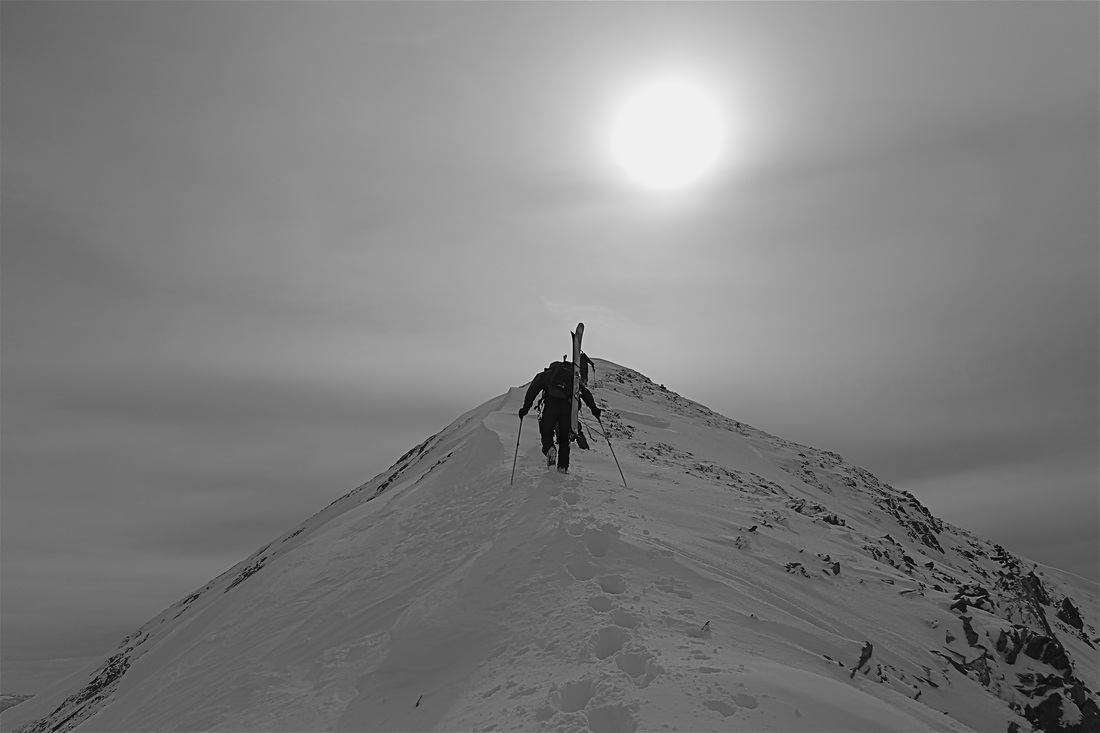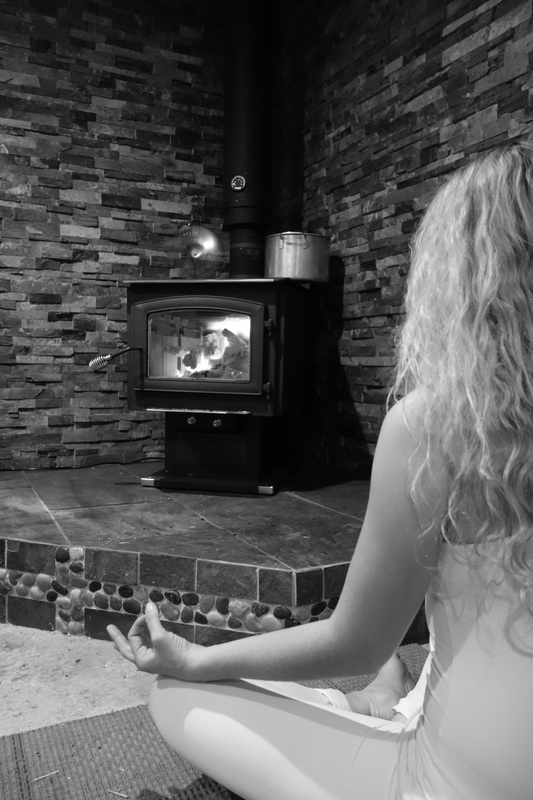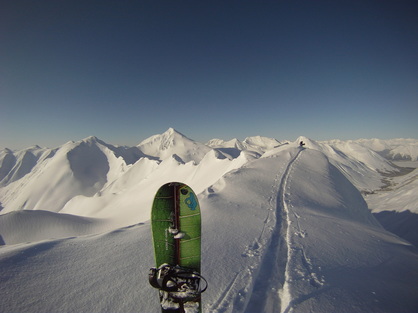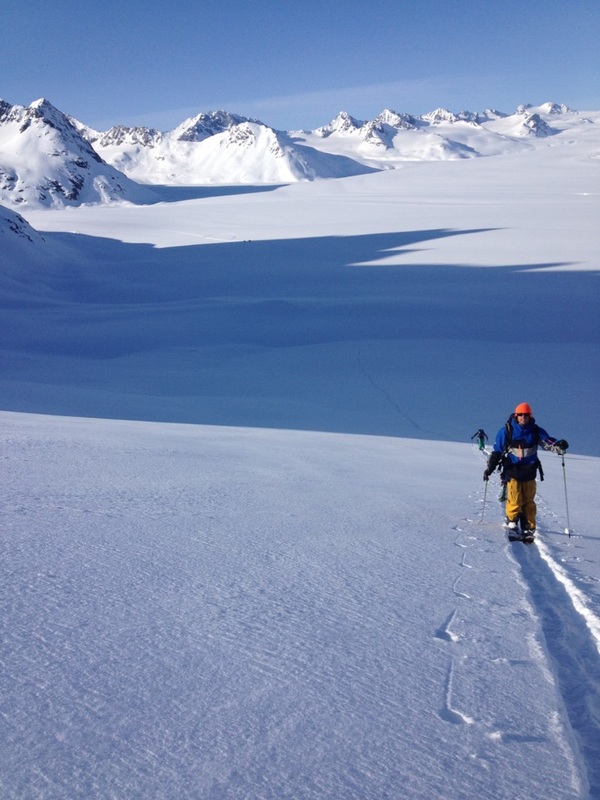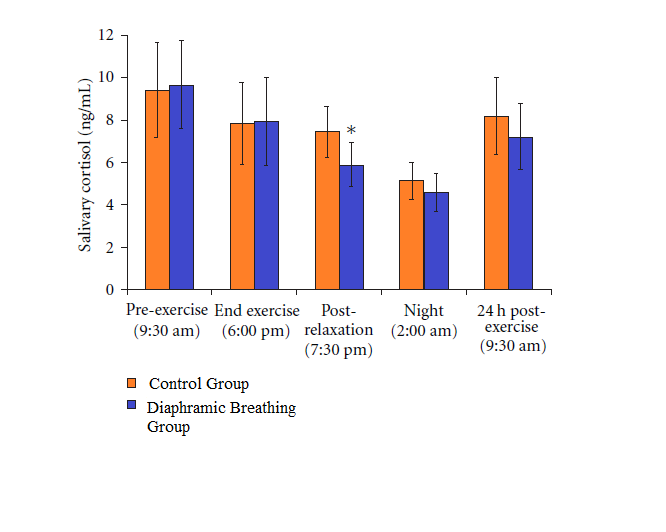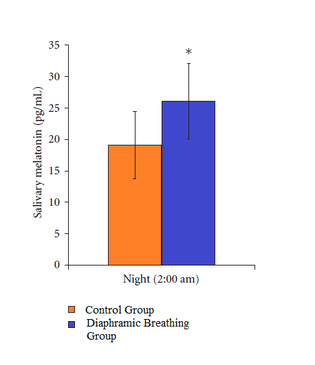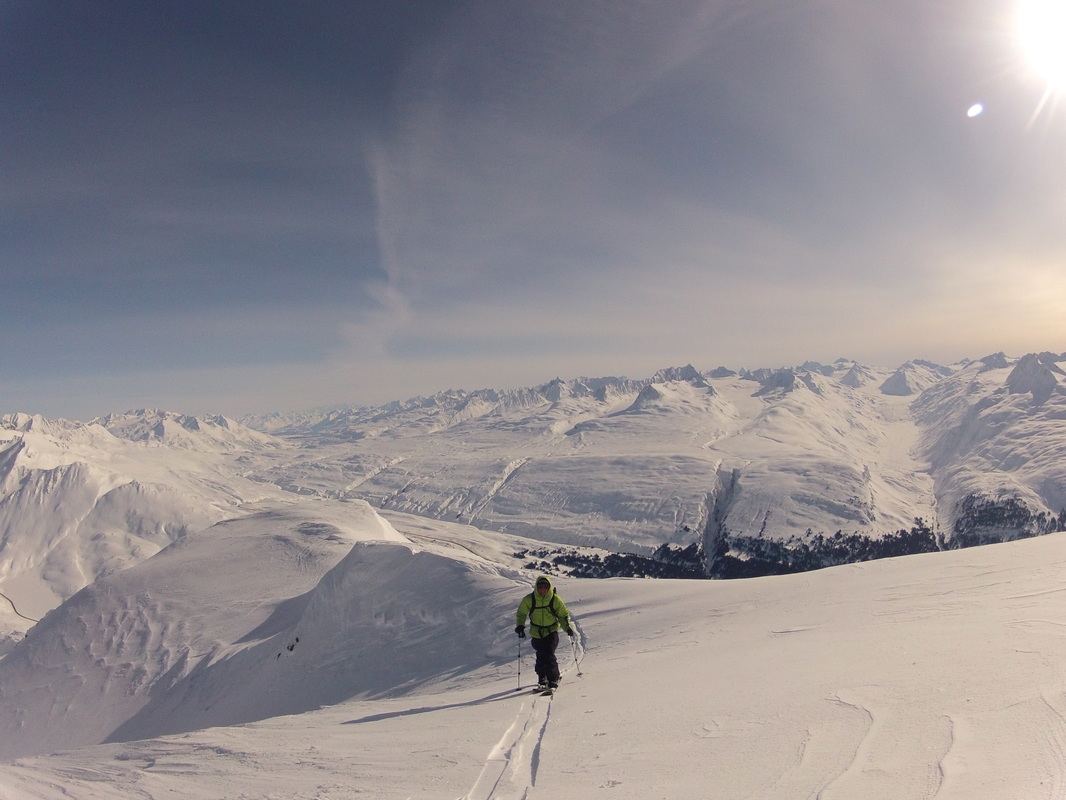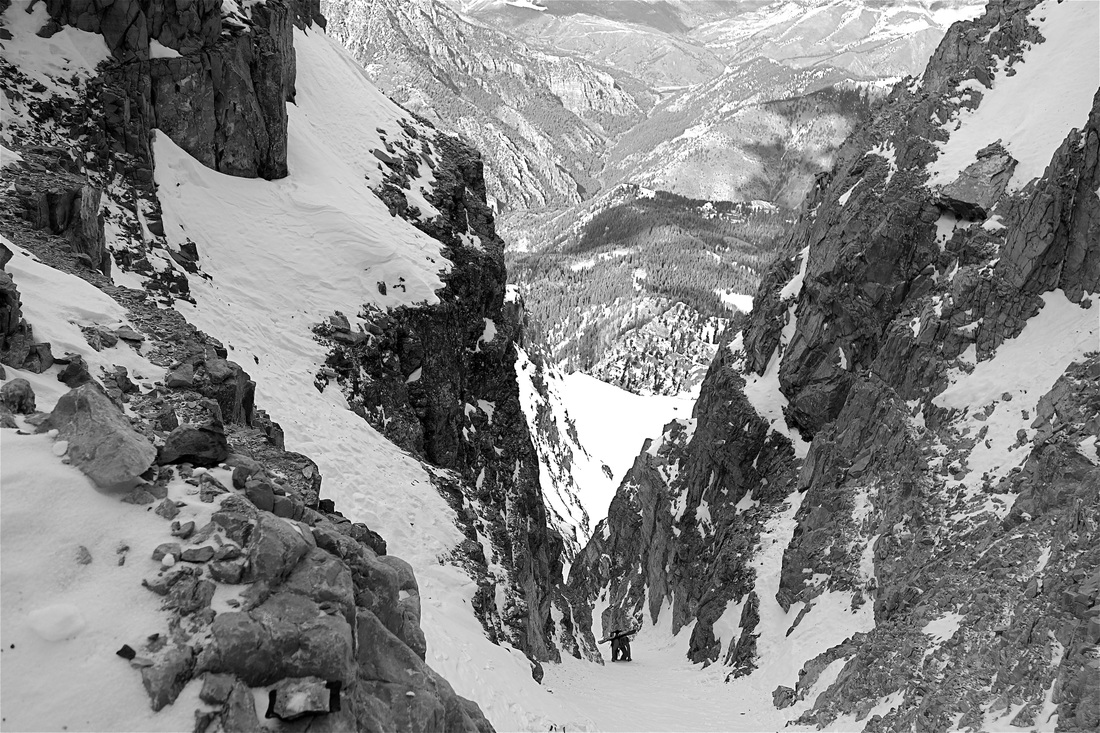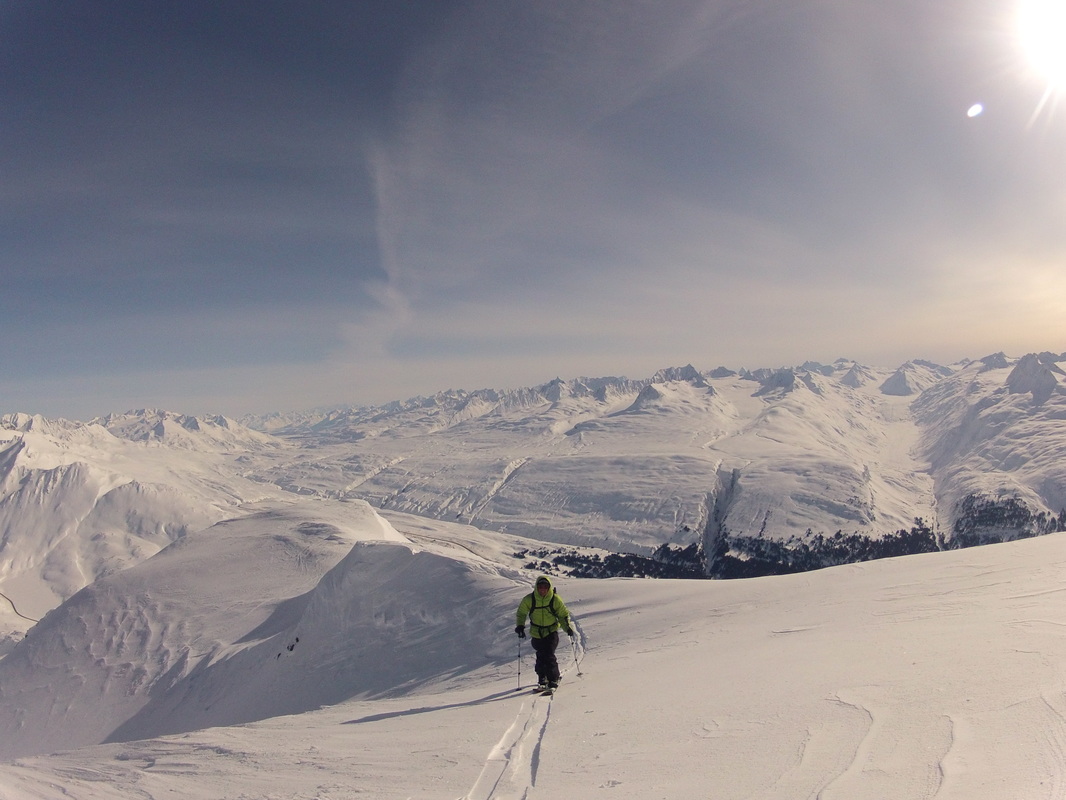|
|
Meditation has traditionally been used as a spiritual practice for monks and nuns as a way to gain a deeper understanding of the human mind. It is also a way to detach from our surroundings and tap into ourselves, so that new perspectives of it can arise. Eventually it is thought to ease the suffering caused by our attachment to the superficial things in life. Mountaineering also severs this attachment and brings us into alignment with the mountains and often sends us into a state of focus. So I thought I would explore the opportunity to integrate the two and use meditation to enhance my clarity in the mountains
Now, there are circles of people that believe meditation is a freaky Buddhist hypnotism ritual or that it is harmful and can make you go crazy. Dwelling on the negative aspects of life makes that negative energy more intense. Think of repressed thoughts like a repetitive loop, round and round until they are either acted upon or consciously resolved. Unresolved negative thought loops can become faster and more scattered if we choose to blow them off. More intense loops of negative energy can be detrimental. In yogic practices there are tools to help this looping called the Brahma Viharas (four sublime attitudes) one aspect of them is called metta which translates to love and kindness. Metta’s opposite is dukka which translates into suffering and distress. If we use metta in our thoughts about reaching a summit or survival; we loop more metta back around and metta eventually makes new and more positive thoughts about the situation. Meditating before, after, and during a big trip can help our thought processes before limiting dukka thoughts even come into play. |
|
Professional skier & worldwide mountaineer, Andrew McLean, expressed that, “I firmly believe in positive mental imagery, you have to see yourself succeeding.” In the mountains staying focused, aware of surroundings, and what is going on is essential. By meditating and visualizing before a climb, the lingering distracting thoughts have been dealt with, the plan is in place, and better focus stems from it. With some visualization meditation practice you will effortlessly see yourself succeeding.
Now, you can’t positively think the snowpack into stability but keeping a good attitude when backing off an unsafe objective will only make your survival in the backcountry more likely. Meditation can make us safer in the hills by not only increasing our focus and awareness but also by teaching the principal of non-attachment. This powerful Zen practice helps us be content with the present moment and by detaching from a “summit fever” mentality, meditation may just save your life. The balance to seek is somewhere between limiting beliefs and actual safety. You may also observe a change in your thought processes as your mind re-wires itself, according to another study on meditation conducted by Yale University. In this study they found (or maybe just reaffirmed ancient findings) that mindfulness meditation decreases activity in the default mode network, the part of the brain that is responsible for mind wandering- a.k.a “monkey mind”. New connections are formed in the brains of mindfulness meditators and when their minds wander, go into DMN, it is easier for them to realign and focus.
Meditation can be an amazing tool in order to increase our endurance, our safety, and our overall life experiences. With your body and mind more able to process the stress, you are able to go further. Starting to practice can range from simple, sitting and focusing on breathing everyday (or even every week), to visualization and mantras. Any type can help to combat the stress that pushing our physical limits can create. When I started to understand that my success was all encompassed in my outlook, it gave me a renewed confidence in owning my achievements. As with any challenge, it is the way we experience it that determines our enjoyment in it, as well as the chemicals our bodies make. Attitude is a choice in experience, it is what we will take into memory, and meditation is a path to consciously enriching those achievements. Forrest Shearer once told me, “These feelings just come to you naturally and it's all about the moment. Similar to when I'm surfing; I’m not focusing too much on the outside negative energy but more in the inner positivity.” Meditation will help mountaineers go farther, be safer and have more fulfilling experiences. |
Putting the metaphysical aside, how about using science to actually measure the benefits of meditation? When we endure at deep level our bodies use up oxygen faster, we produce more oxidative stress with the chemical cortisol, and our ph becomes more acidic. However, there is enjoyment that comes from the “suffer-fest”; some sort of strange pleasure. One aspect of the pleasure comes from a chemical called dopamine that is produced as we exercise. It is this pleasure that makes us crave more, this pleasure can even become addictive. After a long day on the mountain our bodies also make a chemical called melatonin. You can help increase your stamina in the hills with meditation because it creates more of the chemical melatonin and increases the oxygen saturation in the blood stream.
There was a Study conducted by the Department of Experimental Medicine and Public Health at the University of Camerino; 16 athletes where put into two groups. Both groups went through an intense 8 hour mountain bike ride. After the ride, tests were taken to record everyone’s exercise induced oxidative stress levels. Oxidative stress is a condition where there is an increase of oxidation in cells, along with the production of the chemical cortisol, they cause free radicals that degenerate the cells. Afterwards, one group did a deep diaphramic breathing meditation and the others just simply relaxed; both in similar rooms. After an hour they were tested again and you can see their results in the graph. The melatonin is a hormone produced in order to relax and it is also an antioxidant that counteracts oxidative stress. The meditative breathing prevents oxidative damage from happening by helping us produce more melatonin as well as increases the oxygen intake in our blood stream. More than just recovery, the more oxygen in the blood stream makes for more readily available energy supplies. |
12 steps to help facilitate meditation-
1. Set aside a special place away from everyone, or with everyone, depending on your group dynamic. How you set up this space will help with concentration. This place will eventually develop an aura of its own that helps facilitate meditation. I like to find flat rocks, take my closed cell pad to a place with a view, or just sit in my tent if I’m not at home.
2. Pick a time when your mind can be free. (Dawn or dusk is best because of the calm energy level.) Using the same time and place each day helps the mind to calm more quickly. I prefer dusk because it won’t interfere with dawn patrol missions.
3. Sit with your back strait in line with your neck and head. Proper alignment will help you stay focused and eventually help you general posture.
4. Pick a direction. (north & east are the positive poles of the earth, and so they may be good choices.)
5. Suggest to the mind that, it is time to slow down and rest the soul.
6. Slow and deepen the breath
7. Now let it go and let the body find a natural rhythm.
8. Let the mind wander at first to clear out the thoughts. You can step back and observe almost like your thoughts are just sweeping by on their own or like birds flying past in the sky.
9. Eventually bring the mind on to a focal point like breath or candle gazing works well. If the mind wanders from your focus don't be forceful, bring it back gently.
10. Meditation is a process not a destination. It occurs when you reach a state of full awareness and your sensitivity enhances.
11. Eventually duality disappears and samati which means unity of the mind, body and soul, comes to be.
12. Don’t aspire to or try to force anything particular to happen, just let it run the course on its own. The more you do it the smoother your mind becomes.
2. Pick a time when your mind can be free. (Dawn or dusk is best because of the calm energy level.) Using the same time and place each day helps the mind to calm more quickly. I prefer dusk because it won’t interfere with dawn patrol missions.
3. Sit with your back strait in line with your neck and head. Proper alignment will help you stay focused and eventually help you general posture.
4. Pick a direction. (north & east are the positive poles of the earth, and so they may be good choices.)
5. Suggest to the mind that, it is time to slow down and rest the soul.
6. Slow and deepen the breath
7. Now let it go and let the body find a natural rhythm.
8. Let the mind wander at first to clear out the thoughts. You can step back and observe almost like your thoughts are just sweeping by on their own or like birds flying past in the sky.
9. Eventually bring the mind on to a focal point like breath or candle gazing works well. If the mind wanders from your focus don't be forceful, bring it back gently.
10. Meditation is a process not a destination. It occurs when you reach a state of full awareness and your sensitivity enhances.
11. Eventually duality disappears and samati which means unity of the mind, body and soul, comes to be.
12. Don’t aspire to or try to force anything particular to happen, just let it run the course on its own. The more you do it the smoother your mind becomes.
|
15 minute So-Hum
Start seated in a comfortable position. “Perfect pose” has a nice feel to it. You sit “Indian style” and then bring your bottom leg so it touches your other thigh and bring the top of you foot into the crease in your bent leg. Bring your attention to the breath and just simply notice it. Start to inhale So and exhale Hum. SoHum means “I am that” connect with yourself without any thoughts or preconceptions of who you are. Just be. |
15 minute Four part Breathing
Start sitting comfortably. Any way that feels good in fine. Even lying down in savasana is very beneficial. When we lay with our backs flat it gives the vertebrae in our spines a chance to reabsorb the water the gets lost throughout the day. Bring your awareness to your breath. Start to breathe in for 10 seconds; hold in for 5; out for 10; hold out for 5. Continue to flow with this breath. If you get distracted by a thought or an impulse, acknowledge it without judgment and come back to your breath. |
15 minute slow hands
Sit comfortably and shake out your hands. Bring your hands to your thighs and notice the sensation of your pulse in your fingers. Breathing all the while. Start to breath into your belly filling it up. As you are inhaling, imagine a bright light emanating from you core or power chakra. As you exhale the light gets dimmer and brighter on the inhale pulsing with breath. Very slowly, start to bring your palms to face each other. Notice any sensation of the movement. See the light that was in you core, as a ball in between your hands. Pulse your hands slowly and feel the sensation of the light. Now imagine the ball is the earth and the light from your breath is healing energy. Heal the world as you hold this light around it. |
15 minute Air
Stand in tadasana, mountain pose, with your eyes closed. Breath in as if your whole core, chest, and shoulders are an empty vase. Filling it up from the bottom up. As you are breathing imagine you are at the bottom of the ocean standing in tadasana and breathing freely. Feel your arms- is there an undulation as the tide comes in and goes out? This ocean you are imagining is the same ocean of air that we live in everyday. It sustains us and gives us life. |
